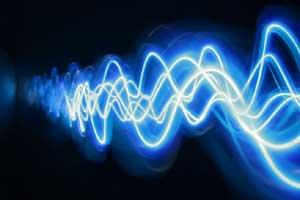 A small, but growing, idea in theoretical physics and cosmology is that spacetime may be emergent. That is, spacetime emerges from something much more fundamental, in much the same way that our perception of temperature emerges from the motion and characteristics of underlying particles.
A small, but growing, idea in theoretical physics and cosmology is that spacetime may be emergent. That is, spacetime emerges from something much more fundamental, in much the same way that our perception of temperature emerges from the motion and characteristics of underlying particles.
[div class=attrib]More on this new front in our quest to answer the most basic of questions from FQXi:[end-div]
Imagine if nothing around you was real. And, no, not in a science-fiction Matrix sense, but in an actual science-fact way.
Technically, our perceived reality is a gigantic series of approximations: The tables, chairs, people, and cell phones that we interact with every day are actually made up of tiny particles—as all good schoolchildren learn. From the motion and characteristics of those particles emerge the properties that we see and feel, including color and temperature. Though we don’t see those particles, because they are so much smaller than the phenomena our bodies are built to sense, they govern our day-to-day existence.
Now, what if spacetime is emergent too? That’s the question that Joanna Karczmarek, a string theorist at the University of British Columbia, Vancouver, is attempting to answer. As a string theorist, Karczmarek is familiar with imagining invisible constituents of reality. String theorists posit that at a fundamental level, matter is made up of unthinkably tiny vibrating threads of energy that underlie subatomic particles, such as quarks and electrons. Most string theorists, however, assume that such strings dance across a pre-existing and fundamental stage set by spacetime. Karczmarek is pushing things a step further, by suggesting that spacetime itself is not fundamental, but made of more basic constituents.
Having carried out early research in atomic, molecular and optical physics, Karczmarek shifted into string theory because she “was more excited by areas where less was known”—and looking for the building blocks from which spacetime arises certainly fits that criteria. The project, funded by a $40,000 FQXi grant, is “high risk but high payoff,” Karczmarek says.
Although one of only a few string theorists to address the issue, Karczmarek is part of a growing movement in the wider physics community to create a theory that shows spacetime is emergent. (See, for instance, “Breaking the Universe’s Speed Limit.”) The problem really comes into focus for those attempting to combine quantum mechanics with Einstein’s theory of general relativity and thus is traditionally tackled directly by quantum gravity researchers, rather than by string theorists, Karczmarek notes.
That may change though. Nathan Seiberg, a string theorist at the Institute for Advanced Study (IAS) in Princeton, New Jersey, has found good reasons for his stringy colleagues to believe that at least space—if not spacetime—is emergent. “With space we can sort of imagine how it might work,” Sieberg says. To explain how, Seiberg uses an everyday example—the emergence of an apparently smooth surface of water in a bowl. “If you examine the water at the level of particles, there is no smooth surface. It looks like there is, but this is an approximation,” Seiberg says. Similarly, he has found examples in string theory where some spatial dimensions emerge when you take a step back from the picture (arXiv:hep-th/0601234v1). “At shorter distances it doesn’t look like these dimensions are there because they are quantum fluctuations that are very rapid,” Seiberg explains. “In fact, the notion of space ceases to make sense, and eventually if you go to shorter and shorter distances you don’t even need it for the formulation of the theory.”
[div class=attrib]Read the entire article after the jump.[end-div]
[div class=attrib]Image courtesy of Nature.[end-div]
